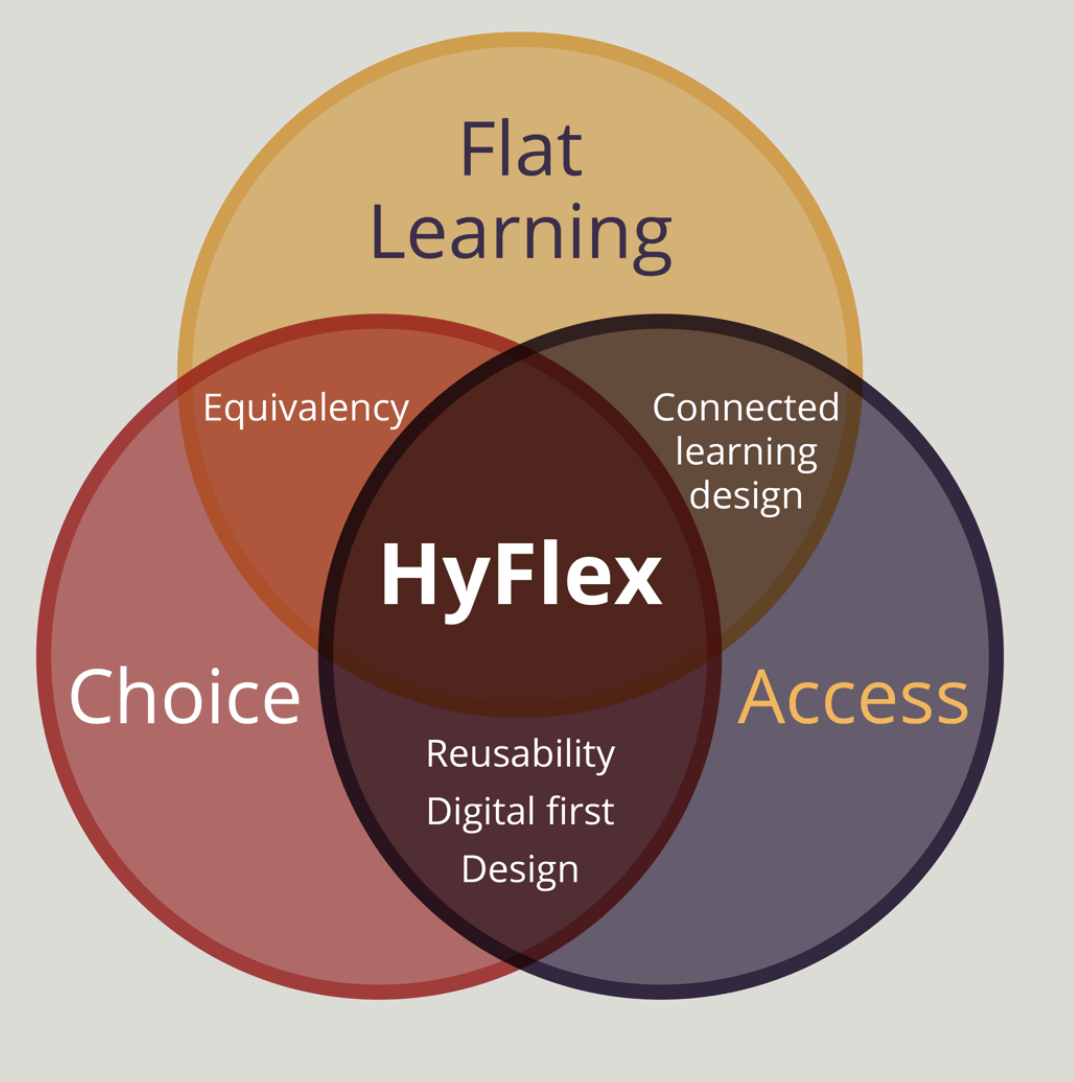HyFlex Learning and Teaching
HyFlex provides a framework for exemplary design practices in higher education.
- Hybrid modes of learning – synchronous, asynchronous, on-campus and online without compromising the learner’s experience.
- Flexible choices – students participate in a manner that best suits their learning needs while still maintaining the integrity of the courses and the assessment requirements.
HyFlex is grounded in over a decade of professional practice and research. The term HyFlex was first coined by Beatty (2006) as UCLA began providing learning experiences in hybrid modes. In 2023 many higher education institutions will be providing hybrid experiences however the four pillars of HyFlex (choice, equivalency, reusability and accessibility) have been identified to make sure that the experiences are not only flexible but equitable for online and on-campus students. Something that sets HyFlex apart from other types of hybrid learning is that it is a student-directed hybrid.
Based on the Beatty (2019) model of HyFlex Principles, the approach shared in the above video identifies three key attributes. These are:
- Choice: providing a range of choices for the learner
- Flat learning (Lindsay, 2016): connected, social, no hierarchy
- Accessibility: equality assured by embedded universal design principles

References
Beatty, B. (2006, October) Designing the HyFlex world: Hybrid, flexible classes for all students. Paper presented at the Association for Educational Communication and Technology International Conference, Dallas, TX. https://aect.org/docs/2006DallasProgram.pdf
Beatty, B. (2007). Transitioning to an online world: Using HyFlex courses to bridge the gap. In C. Montgomerie & J. Seale (Eds.), Proceedings of ED-MEDIA 2007–World Conference on Educational Multimedia, Hypermedia & Telecommunications (pp. 2701-2706). Association for the Advancement of Computing in Education (AACE).
Beatty, B. J. (2019). Hybrid-flexible course design. Open Scholars Press. https://openscholarspress.org/hyflex
Beatty, B. J. (2022, March 17). Crossing the hyflex bridge [blog]. https://www.hyflexlearning.org/2022/03/17/crossing-the-hyflex-bridge/
Clinton, V., & Kelly, A. E. (2020). Improving student attitudes toward discussion boards using a brief motivational intervention. Scholarship of Teaching and Learning in Psychology, 6(4), 301-315. https://doi.org/10.1037/stl0000160
Dalgarno, B. (2014). Polysynchronous learning: A model for student interaction and engagement. In B. Hegarty, J. McDonald, & S.-K. Loke (Eds.), Rhetoric and Reality: Critical Perspectives on Educational Technology. Proceedings ASCILITE Dunedin 2014 (pp. 673–677)
HyFlex Learning Community of Practice. https://www.hyflexlearning.org/
HyFlex discussion paper and accompanying slides (February 2023)
Jacka, L., & Lindsay, J. (2022). Flexible Learning and the Virtual Campus. ASCILITE Publications, e22154. https://doi.org/10.14742/apubs.2022.154
Lindsay, J. (2016). The global educator: Leveraging technology for collaborative learning & teaching. International Society for Technology in Education.
Lindsay, J., & Jacka, L. (2022, October 13). Introduction to HyFlex learning and teaching. https://create.usq.edu.au/edtech/2022/10/13/introduction-to-hyflex-learning-and-teaching/


0 Comments